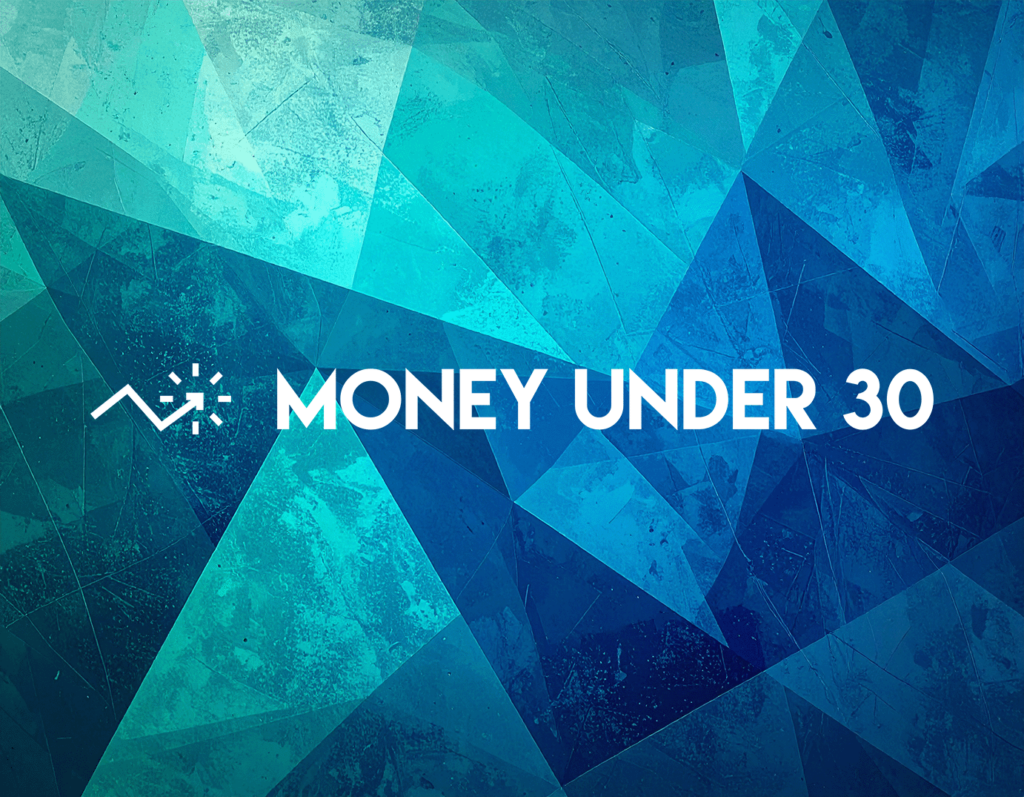Maybe you’ve heard someone shout “buy war bonds!” in a World War II flick.
Or maybe you’ve overheard your folks or fellow investors talk about buying more bonds when the market is down.
Either way, you probably have the general impression that bonds are:
- Boring
- Low risk, and
- Have something to do with the government.
I’m here to tell you that two out of three are true; bonds are low risk and you can buy them from Uncle Sam. But they’re not that boring! In fact, they can be super smart buys for investors under 30.
But how? And what exactly are bonds? How do you buy them and what kind of returns should you expect?
What is the purpose of a bond?
A bond is a loan.
When you buy a bond, you’re essentially loaning that money to the bond “issuer,” aka seller. In exchange, the bond issuer pays you regular interest payments. Then, when the bond “matures,” aka expires, they pay you back 100% of your initial investment amount.
To use a super rudimentary example, let’s say you buy $100 worth of bonds from a corporation. That corporation will then pay you $5 every six months for 10 years, and in year 10, they pay back your full $100.
Investors like bonds because they’re low risk, provide steady income, and are a nice way to diversify a portfolio.
Issuers like bonds because they help them raise money for big projects like new office buildings, or in the government’s case, new bridges, roads, and other infrastructure.
How do bonds work?
Bonds have five key elements:
- Face value is the asking price of the bond.
- Coupon rate is the interest you’ll earn, expressed as a percentage of the face value.
- Coupon date is the date you’ll get your interest payments, typically every six months.
- Maturity date is the date the bond expires.
- Issue price is the bond’s face value plus market adjustments and/or other fees.
In most cases, bonds sell for the face value. When the face value equals the issue price (i.e., there are no extra fees attached), this is known as selling “at par.”
How much do bonds cost?
Bonds can vary in price depending on the type of bond you’re buying. I’ll be discussing the types in detail later, but here’s a quick primer on cost:
- U.S. Treasury bonds start at $25.
- Municipal bonds typically start at — and are sold in increments of — $5,000.
- Corporate bonds typically start at $1,000.
Bonds and interest rates
A bond’s interest rate is called the “coupon rate.” Why couldn’t it just be called the interest rate? Because that would be too easy!
Anyways, the coupon rate is expressed as a percentage of the face value, and represents how much you’ll be paid in interest every year.
For example, a $1,000 bond with a coupon rate of 4% will pay out $40 annually until the bond’s maturity date.
The coupon dates are the dates on which you’ll receive those payments. So if you buy a $1,000 bond with a coupon rate of 4% and coupon dates of January 1 and July 1, you’ll receive $20 on each date until the bond expires and you get your whole $1,000 back.
Do bonds have a fixed interest rate?
Most bonds have a fixed interest rate, but some don’t.
EE savings bonds, for example, have a fixed rate through the life of the bond. This helps you plan out your income and buy bonds accordingly.
I savings bonds, by contrast, have a variable interest rate that changes every six months to match the rate of inflation.
How often do bonds pay interest?
In most cases, bonds pay interest every six months.
But there are exceptions. I savings bonds, for example, roll your interest back into the value of the bond. So you won’t receive regular income from I bonds, but your investment will compound faster.
Average bond return
The historical average rate of return for bonds is around 5%, or half the average return of the stock market.
Despite the comparatively modest returns, folks still love bonds for three reasons:
- Steady, guaranteed passive income
- Diversification, and
- Bonds tend to go up in value during economic downturns.
Wait, how do bonds go up in value?
Do bonds increase in value?
Bonds can fluctuate in value, and in some cases, they can even go up and be sold for a profit on the secondary market.
Bonds tend to increase in value when:
- Interest rates fall, meaning your old bond may have a better coupon rate than new bonds, and thus others will want to buy it from you.
- The issuer’s credit rating improves, which means they’re less likely to default on the bond they issued you, and more buyers might be interested in taking it off your hands.
Of course, your bond may fall in value, too. If you bought at a coupon rate of 4% — and the new coupon rate is 6% — nobody will want your bond for what you paid for it. They’ll just buy a new one.
Either way, your bond’s value on the secondary market won’t impact the amount the bond issuer pays you back on the maturity date. That’s fixed.
Bond example
Here’s an example of a corporate bond you might buy:
- Face value: $1,000
- Coupon rate: 4.69%
- Coupon dates: April 3 and October 3
- Maturity date: April 18, 2028
- Issue price: $1,017
How much will you pay upfront? And how much will you have earned from total coupon payments by the maturity date?
The answers are $1,017 and approximately $240.95 respectively, not accounting for taxes and fees.
Bond vs. loan: Are they the same?
The key difference between a bond and a traditional loan is the timing of the principal payment. With bonds, the issuer holds onto 100% of the principal until the day the bond matures. With traditional loans, the principal and interest are paid back simultaneously.
In other words, the payments on a five-year, $1,000 loan might look like this:
- Year 1: $217.94
- Year 2: $217.94
- Year 3: $217.94
- Year 4: $217.94
- Year 5: $217.94
Whereas the payment schedule for a five-year, $1,000 bond might look like this:
- Year 1: $50
- Year 2: $50
- Year 3: $50
- Year 4: $50
- Year 5: $1,000
Types of bonds
What are the three main types of bonds, and which is best for investors under 30?
Treasury bonds
- In a nutshell: Buy a variety of unique bond types directly from the U.S. government, with no need for a broker.
- Best for: Low risk, convenience, beating inflation, graduation gifts
When you buy U.S. Treasury bonds, you’re loaning money directly to the U.S. government. In exchange, you get the lowest possible risk out of any bond investment (or investment in general).
Treasury bonds are also the only bonds you can buy without going through a broker. It’s super safe and easy through TreasuryDirect.gov.
Plus, Treasury bonds are surprisingly neat and quirky. EE savings bonds are guaranteed to double in value after 20 years (making them great college graduation gifts for the infants in your family). I bonds match the rate of inflation, so as of this writing they’re selling at an eye-watering 9.62%.
Municipal bonds
- In a nutshell: Loan money to your city in increments of $5,000 in exchange for medium interest and low taxes on earnings.
- Best for: Balance of risk/reward, supporting your city
Municipal bonds, aka “munis,” are bonds issued by a city and are typically used to fund big infrastructure projects like roads, bridges, libraries, and schools.
Munis tend to be higher interest than Treasury bonds but lower risk than corporate bonds. Plus, you get the warm fuzzies knowing you directly supported a city’s growth and welfare.
Trouble is, munis are typically sold in increments of $5,000, pricing out most investors, and you have to buy them through a broker. Still, they’re a possibility on the table if you’re a high-cap investor looking to support your local municipality.
Corporate bonds
- In a nutshell: Loan money directly to big companies, assuming a bit more risk in exchange for higher (but variable) interest.
- Best for: Higher risk than other bonds, but lower risk than stocks and crypto
Finally, corporate bonds are issued by — you guessed it — corporations. Typically these are big companies looking to quickly fund big projects, so corporate bonds tend to have quicker maturation dates (2, 3, 5 years) compared to government-issue bonds (10, 20 years).
Corporate bonds also tend to fluctuate more in value on the secondary market since the reputation of the company can change on the daily. If investors get spooked that a company might default, its stock price and its bond values may plummet. In short, corporate bonds are the “high risk, high reward” choice of the bond world.
Pros and cons of bonds
Advantages of bonds
- Low risk. Bond investors typically don’t worry about losing money on the daily.
- Offset other risk in your portfolio. Bonds can help balance your higher-risk investments (stock, crypto, etc.).
- Steady income. With the exception of I bonds, most bonds pay fixed interest payments every six months, which is why retirees love them.
- Great buys during high inflation. Most bond values — especially I bonds — go up during periods of high inflation or economic turmoil.
Disadvantages of bonds
- They won’t make you rich. Bonds alone won’t ferry you to financial independence.
- Illiquidity. It’s harder to cash out of bonds than stocks or crypto, and some Treasury bonds have lockup periods.
- Hard to research. Without the guidance of a live broker it can be hard to know which bonds to buy.
- Most require the help of a broker. Guidance aside, most bonds require a broker to buy them for you.
Are bonds a good investment?
Bonds are a great buy when:
- The economy’s not doing so hot. This is a sign that bond rates — and values — will likely start to rise.
- You have low risk tolerance. The lower your risk tolerance, the more you’ll want to mix bonds into your portfolio.
Buying bonds might not be the move if:
- You have a high risk tolerance. If you can stomach more risk in the portfolio, you’ll probably want to focus more on index funds, where the potential gains are greater.
- You need to keep your cash more accessible. Bonds can be hard to resell and typically incur fees. If you need to stay liquid, consider a high-yield savings account.
How to buy bonds
I wrote a whole beginner’s guide on how to buy bonds, but here’s the CliffsNotes version:
- Buying Treasury bonds is super, super easy. You just make an account at TreasuryDirect.gov and purchase the bonds you want, Amazon style.
- Buying munis or corporate bonds requires you to go through a live broker (recommended) or a brokerage platform that supports bond purchases.
I strongly recommend connecting with a financial advisor to help you research the right bonds. Plus, it’s just good to have an FA on your side.
Summary
Bonds are pretty underrated investments for folks under 30. While some may be complex to buy, bonds can generate passive income, rebalance the risk in your portfolio, and even help you hedge your savings against inflation.


